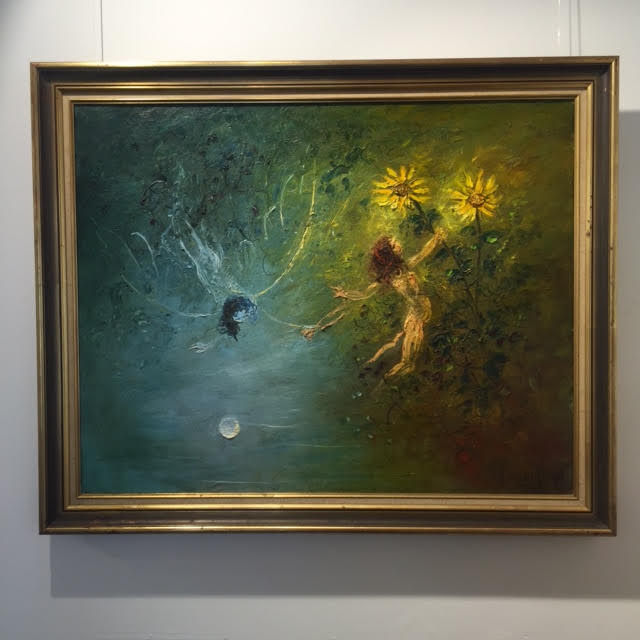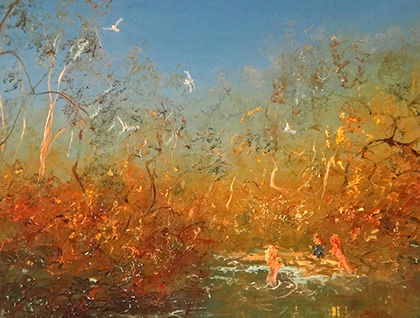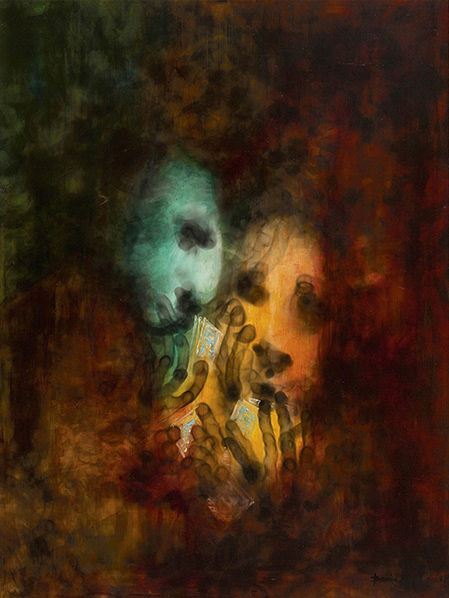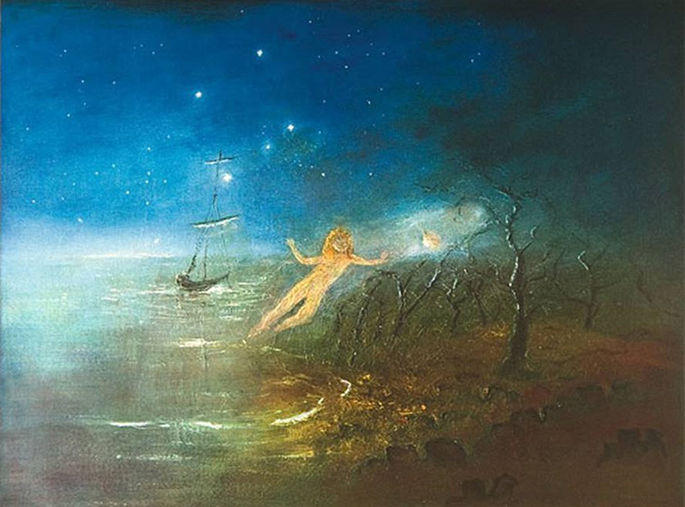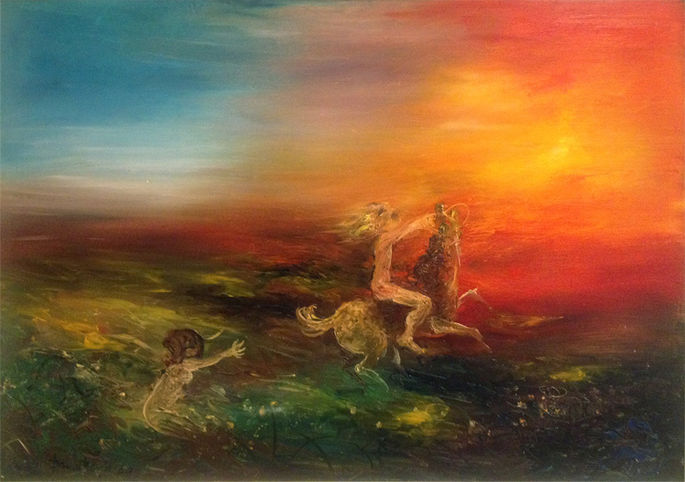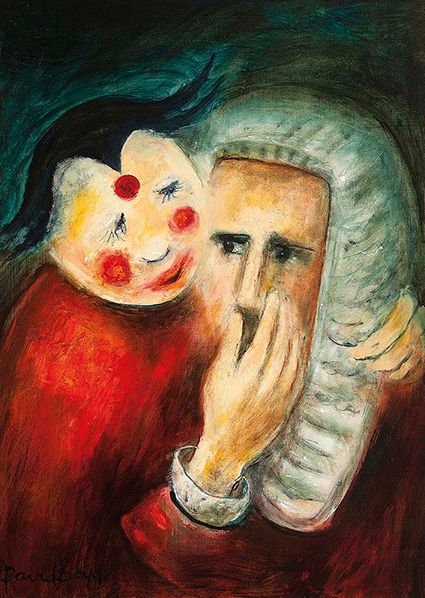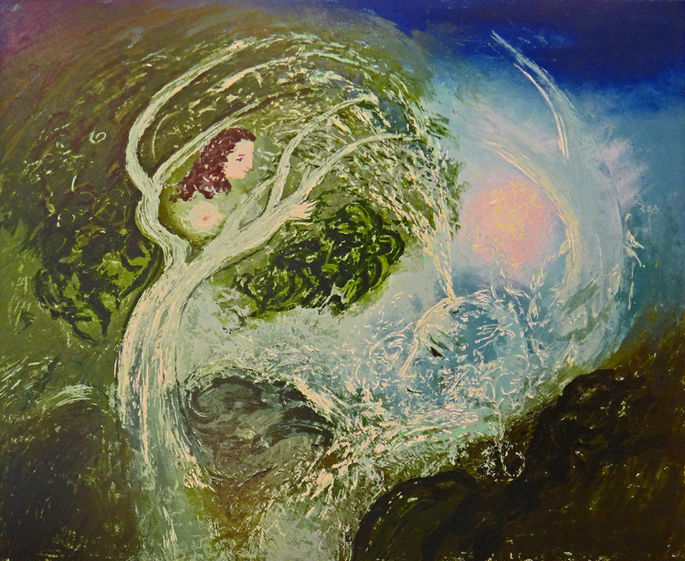
DAVID BOYD
Nationality:
Australian
Year:
David Fielding Gough Boyd OAM: 23 August 1924 – 10 November 2011
Salient points:
Highest Auction Record achieved in 2008 before his death in 2011. $215,000 AUD. (Mossgreen Auctions Melbourne, 03/06/2008, Lot No. 651)
Over 3,500 number of his works have seen the secondary markets of England, France and Australia.
Signatory to the “Antipodean Manifesto” in 1959 along with Charles Blackman, Arthur Boyd, John Brack, Robert Dickerson, John Perceval and Clifton Pugh.
His brother Arthur Boyd auction record before his death in 1999 stood at $330,000 today its $1.68M
Artist David Boyd died, aged 87, in November 2011. He was just one of the extraordinary talents in the Boyd Artistic Dynasty, comprised of around 30 artistically blooded Boyds and their families, including David’s brother, painter Arthur Boyd, and David’s brother-in-law, painter Sidney Nolan.
Boyd’s works span several art forms. Originally a musician, Boyd established himself as a leading name in the Australian pottery scene of the '50s, following in the footsteps of his sculptor father Merric Boyd. With his wife Hermia, Boyd introduced new techniques in glazing and the use of the potter’s wheel to shape sculptural figures. He began painting professionally in ’57, pioneering the ‘Sfumato’ technique, using candle flames and smoke to conjure ghostly images.
Boyd soon became one of the Australian arts scene’s most outspoken voices. He was one of seven Australian artists who contributed to the ’59 Antipodean Manifesto – an exhibition and essay protesting against abstract expressionism – but also used his art throughout his career as a means to comment on social justice and the treatment of Australia’s Indigenous people.
Career:
Boyd entered the Melba Memorial Conservatorium of Music in Melbourne at seventeen, but was conscripted to the army after one year. Upon his return, he studied art at the National Gallery School on an ex-serviceman's grant.
In 1946, he worked with his brother Guy at the Martin Boyd Pottery in Sydney. He also established a pottery studio in London in the early 1950s and continued working mainly in pottery through to the mid-1960s. In 1956, Boyd and his wife became widely known as leading Australian potters. They introduced new glazing techniques and potter's wheel use in shaping sculptural figures.
Boyd's painting career began in 1957 with a series of symbolic paintings on Australian explorers that aroused much controversy at the time, focusing as they did on the tragic history of the Aboriginal Tasmanians. In 1958 he exhibited a series of paintings based on the histological episodes in the explorations of Burke and Wills and Bass and Flinders.[2] He joined the Antipodeans Group in the 1950s. Boyd discovered a technique in 1966 that he named Sfumato, after da Vinci's usage of the word to describe graduations of smoky tones in painting. Boyd's method achieved this effect through a new technique involving candle flame.
Boyd and his family moved to Rome in 1961, and later moved to London. They also spent several years creating art in Spain and the south of France before returning permanently to Australia in 1975.
David Boyd was artist-in-residence at the School of Law, Macquarie University, Sydney from 1993-1996.
In a September 2004 art review, Alex McDonald of State of the Arts magazine stated that David Boyd's work was 'ahead of his time in addressing the mistreatment of Indigenous people in Australia, but commented that an 'explanation for his frosty reception from Australian critics and dealers may have something to do with his choice of subject matter'. McDonald explained that the controversy may have stemmed from the fact that the 'legal system, race relations and religion' are 'not exactly popular issues' and were not 'up for debate in the late 1950s'.
In June 2008, David was awarded an OAM for his services to art as a painter and innovator of design and techniques in pottery and ceramic sculpture.
In August 2010, David was honoured for his contribution to Australian arts and culture at a special luncheon hosted by the Governor of New South Wales, Marie Bashir AC, CVO at Government House. At this event, the Governor announced a major David Boyd exhibition to be held in August 2012 at the National Trust S. H. Ervin Gallery in collaboration with Eva Breuer Art Dealer.
David Boyd was not only a dedicated and celebrated artist but urbane, articulate and a true gentleman. David was devoted to his wife Hermia who died in 2000, a gifted artist in her own right. David adored his daughters, Amanda, who died in 1998, Lucinda and Cassandra and his grandchildren Cressida, Jesamine, Irian, Tom and Will and great grandchildren Georgia, Noah, Chloe and Cy all of whom brought him much joy and happiness. His passing is a major loss to the art world and to the country. David Boyd had a unique insight and an enormous heart.
Collections
Art Gallery of New South Wales, Sydney
National Gallery of Victoria, Melbourne
Art Gallery Of Western Australia, Perth
Australian War Memorial, Canberra
Queensland University, Brisbane
Art Gallery of South Australia, Adelaide
Ballarat Art Gallery, Ballarat, Victoria
Sydney University (Law Faculty), Sydney
Harold Mertz Collection of Australian Paintings, USA
Queensland Art Gallery, Brisbane
Lincolnshire and South Humberside Arts, Usher Gallery, Lincoln, England
Fine Arts Department, University of Melbourne
National Gallery of Australia, Canberra
Adelaide Art Teachers College, Adelaide, SA
Monash University, Melbourne
Law School, University of Melbourne
Newcastle Regional Art Gallery
University of New South Wales, Sydney
Sydney University Power Collection
Bendigo Art Gallery
Graylands College, Perth, Western Australia
National Gallery of Victoria
The University of Adelaide, South Australia
Macquarie University, Sydney, New South Wales
Bundanoon Trust, Nowra, New South Wales
Macquarie University, New South Wales
Secondary Market:
Like with many big name artists, the market must perceive the beginning of a “high demand” phase in ones career before auction prices increase dramatically. In David Boyd’s case, it was the death of his brother Arthur Boyd who passed away in 1999. Since then a large number of works began to appear on the secondary market and the number of total sales yearly topped the $1million(AUD) mark in 2003. A 50% jump from the previous year ($588,249AUD). Since then the Auction houses have consistently seen total sales of David Boyd’s works stay above $1million AUD.
Like the stock market index the overall fine arts market in Australia is influenced very much by top tier blue chip artist. Since 1995 the rate of growth in Australian fine art increased much quicker than the previous 2 decades. Around the same time David Boyd’s average prices began to followed the trend. But by 2003 were exceeding market growth indicating his undervalued status by collectors and investors.
Keen to get their hands on works which traced their roots to the famous artistic dynasty of the Boyd family, many investors saw David Boyd as the best entry point who still had further potential for price appreciation as Arthur Boyd had begun trading at premiums which were only affordable to entry level investors.
Comparing artists’ prices at the top-tier and lower level auction houses can pose a problem; major works would be more likely to appear at the major auctions as a matter of course, while the lower valued works would tend to go to the minor auction houses. This would invariably result in higher prices at the top-tier auction houses. But Boyd is an extremely prolific painter who has produced a large body of work that is physically and stylistic consistent and his paintings regularly appear at all levels of the auction market; so much so that his record was used by art market analyst Dr Roger Dedman as a standard measure in the compilation of the Australian Art Market Movements Handbook.
Examination of Boyd’s auction record shows what can happen to an artist’s prices when his or her work begins to appear with greater frequency at the major auctions. Boyd’s prices changed little between 1987 and 1998. His prices then increased gradually between 1999- 2003, which coincided with the first years of the Australian art market boom. But Boyd’s prices jumped suddenly in 2003 and continued to rise significantly in the years that followed, from an average of just over $5,000 in 2002 to almost $25,000 in 2006. An examination of biographical and historical sources does not reveal any professional achievements or critical reassessments that might otherwise explain this sudden increase. The only event that occurred during this period was that a large proportion of Boyd’s secondary, or auction, market was transferred to the top-tier auction houses: in 1999 and 2000, 18% and 20% respectively passed through the major auction houses; this figure rose to almost 50% in 2003.

